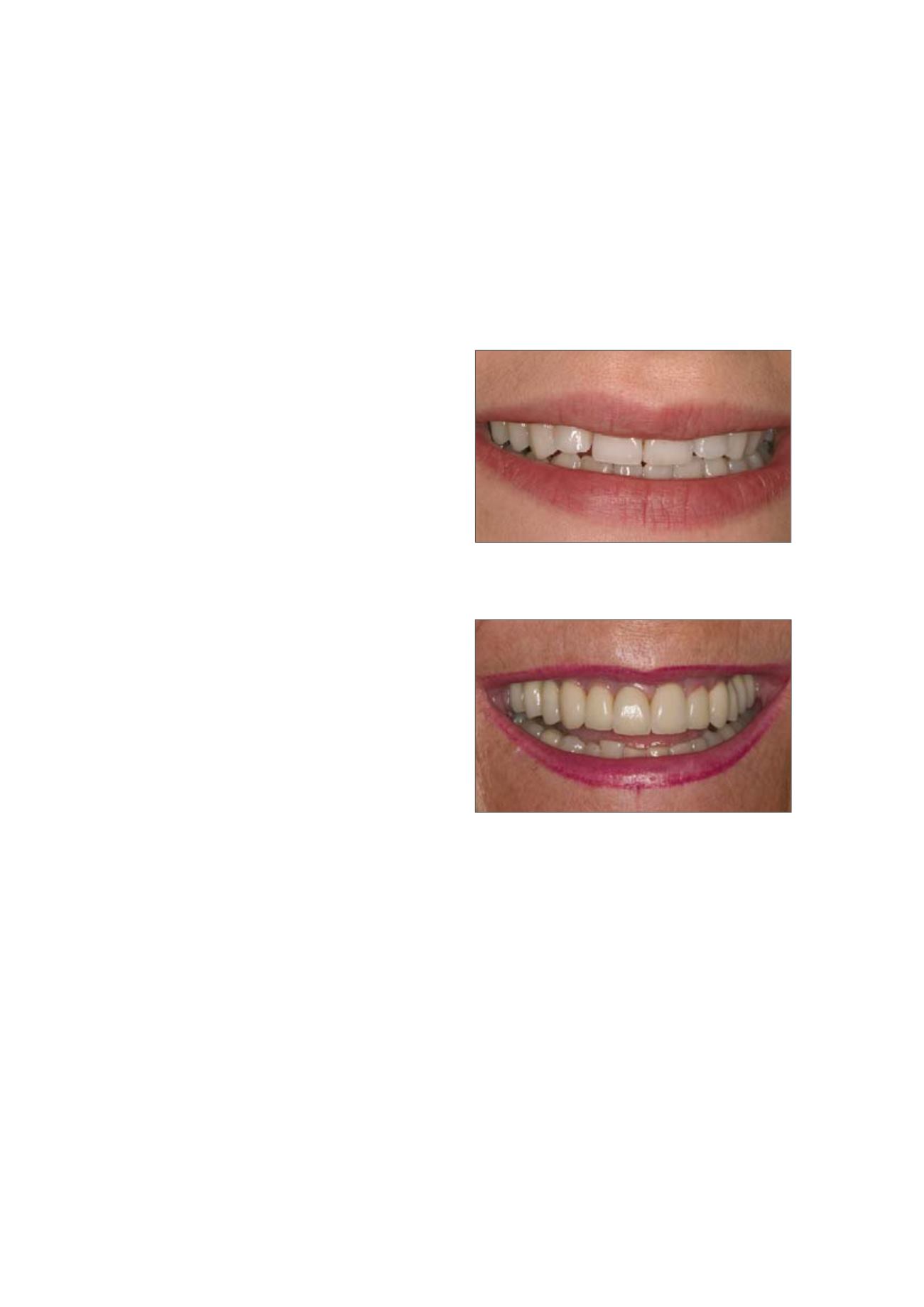

CAMLOG
®
Implant Position Planning
ESTHETICS
The use of therapeutic methods from an esthetic perspective is very depen-
dent upon the initial situation and the visibility of the esthetic impairment.
In the “esthetic zone” (anterior maxillary area), the smile line determines
the extent of work that may be necessary. If prominent transversal or verti-
cal hard- or soft-tissue deficits are present that affect the extraoral soft tis-
sue profile, then lip and cheek support will have to be provided through suit-
able augmentative methods such as implant positioning or prosthesis
design. These can restore the patient’s physiognomy to a large extent.
PATIENT COMPLIANCE
The greater the patient’s desire for a functional – and especially for an es-
thetic – restoration and the more compromised the initial situation, the
more extensively the patient must be educated.
Temporary limitation of function and esthetics may result from the surgery
and the patient might be required to wear a long-term provisional. The ex-
tent of pre-treatment and the particulars of the case will affect the overall
duration of treatment.
In selecting a prosthetic restoration, make sure to take into account, in ad-
dition to the functional and esthetic aspects of the case, any manual and
visual impairments uncovered by the history that may affect the patient’s
ability to manage oral hygiene and prosthesis care.
PATIENT INFORMATION
When the process of ruling out contraindications, collecting clinical and ra-
diographic information, and making a diagnosis is complete, an informa-
tional conference is held with the patient, using documents and models for
demonstration. Risks of treatments and possible alternatives are fully dis-
cussed and documented.
LOW SMILE LINE
The patient exhibits < 75% of the crown length.
Application of all therapeutical means.
HIGH SMILE LINE
The patient exhibits:
– the entire crown length
– adjacent gingiva
Use of all therapeutic means:
– All-ceramic restorations
– Papillae
– Hide scars
– Soft tissues


















